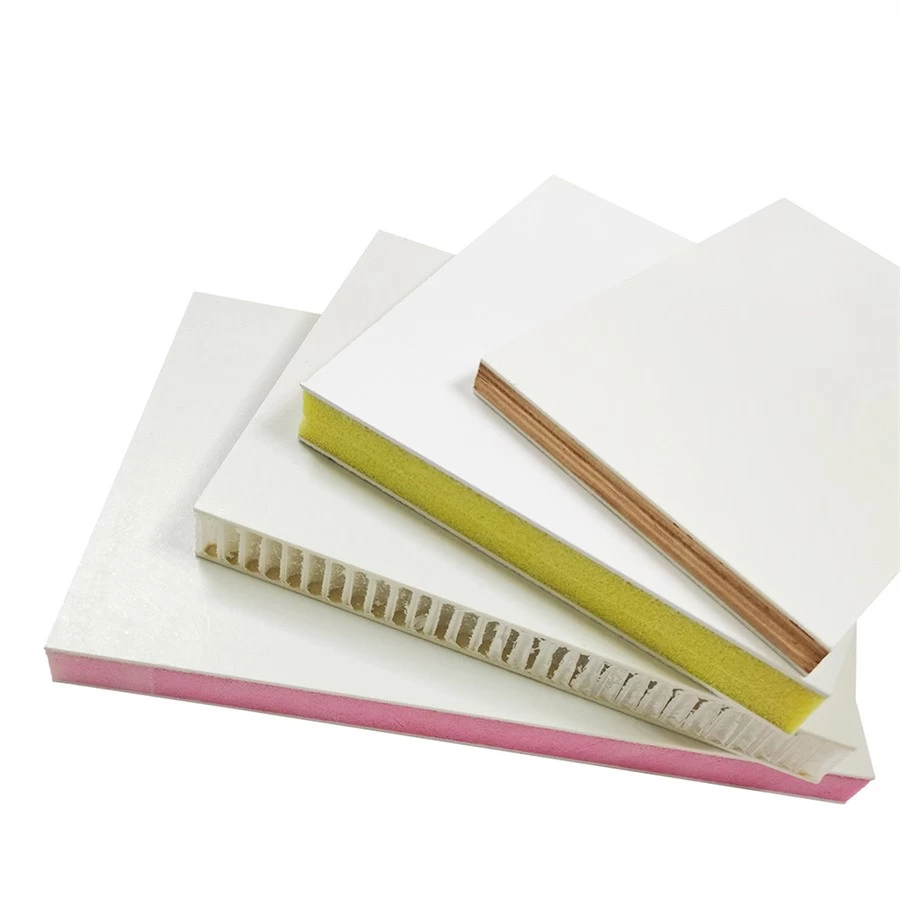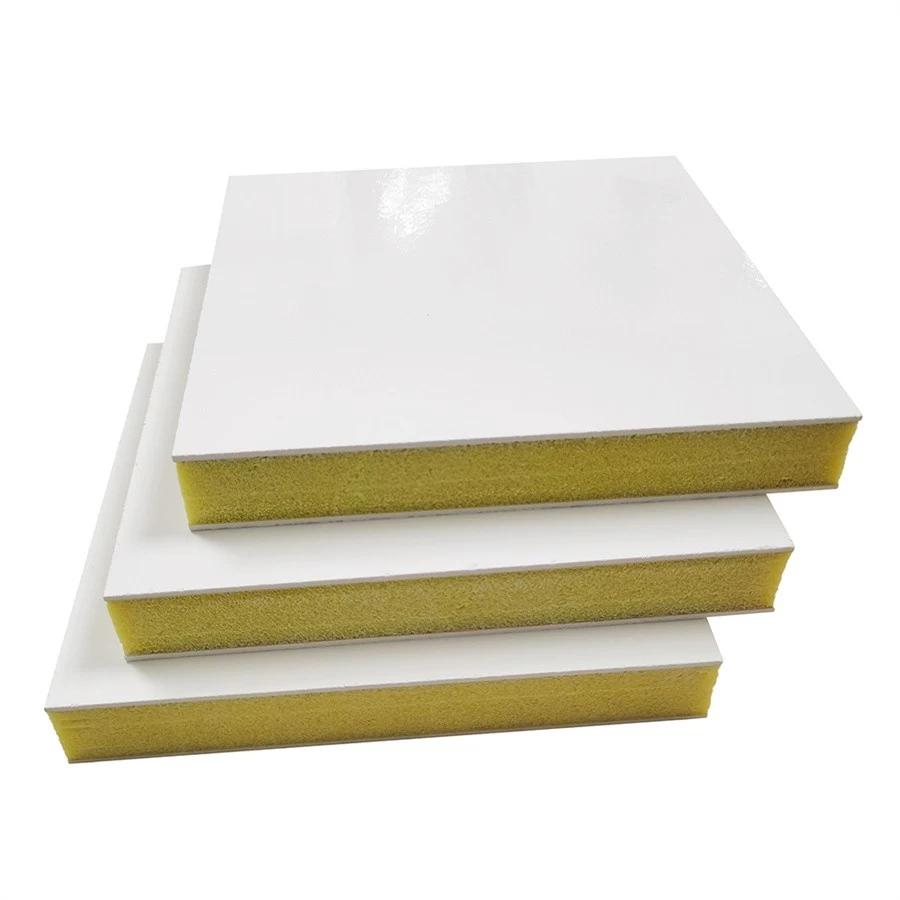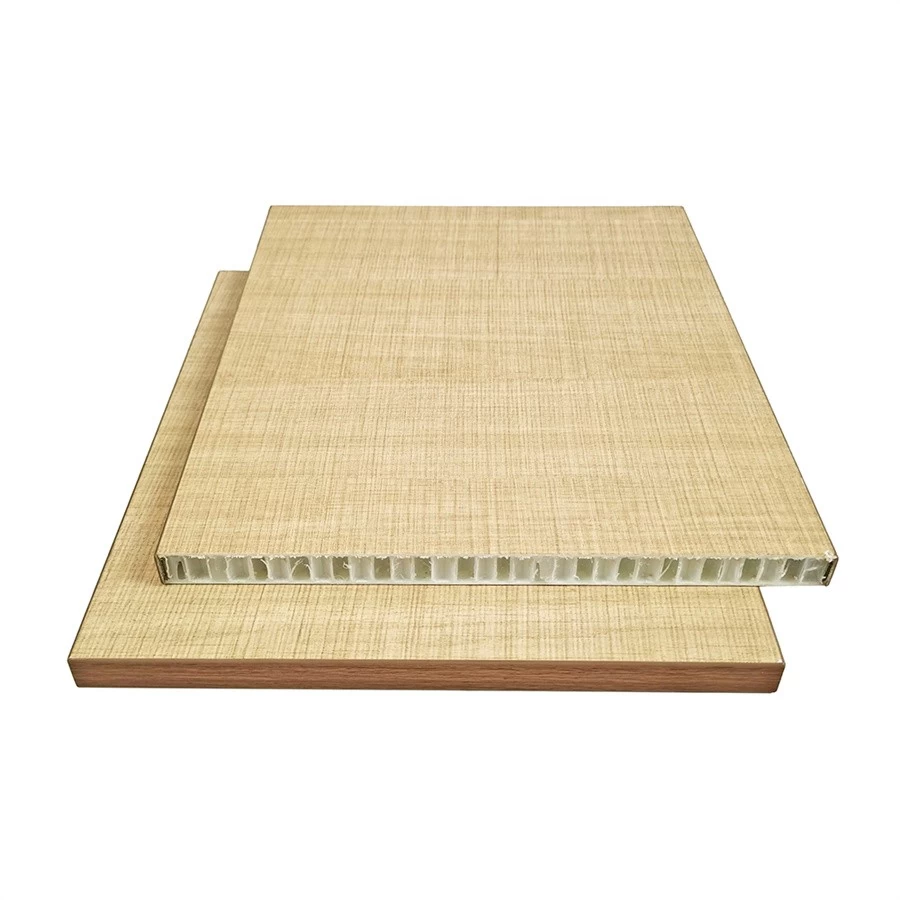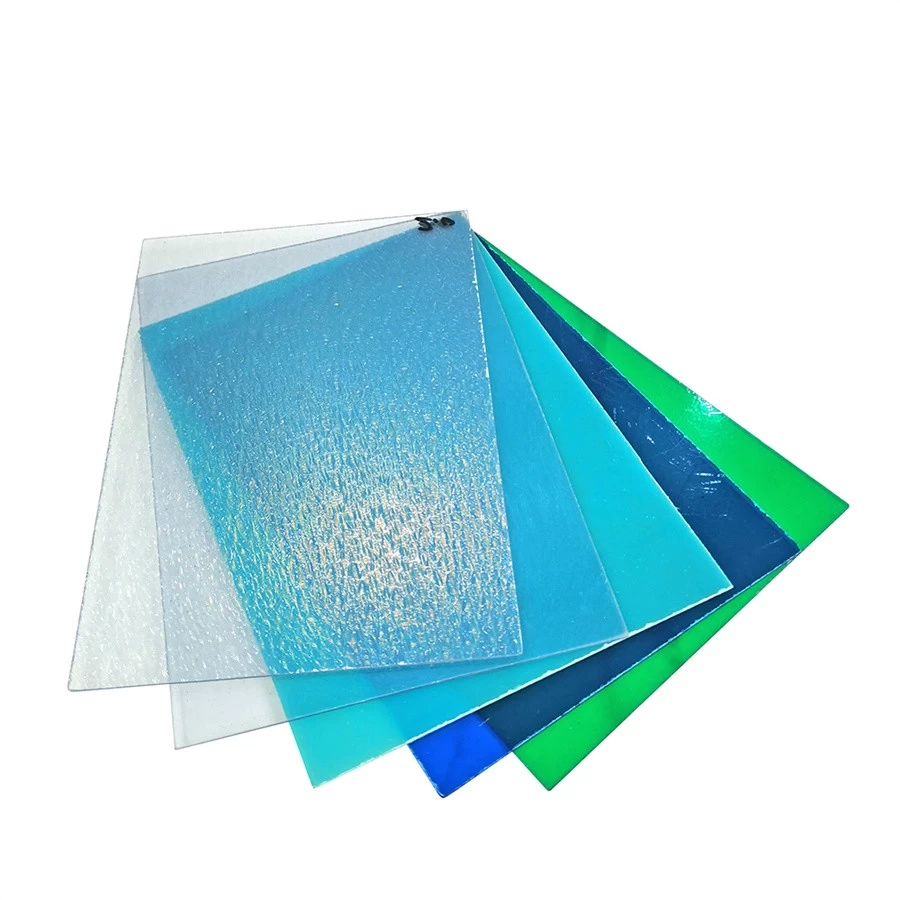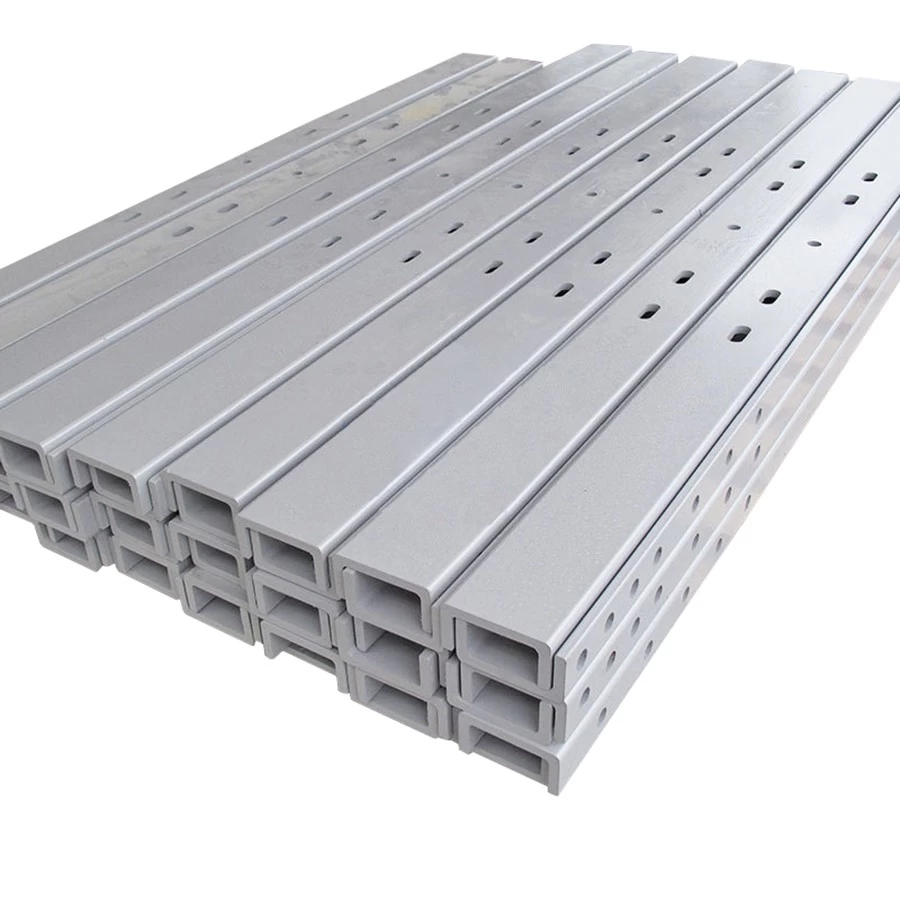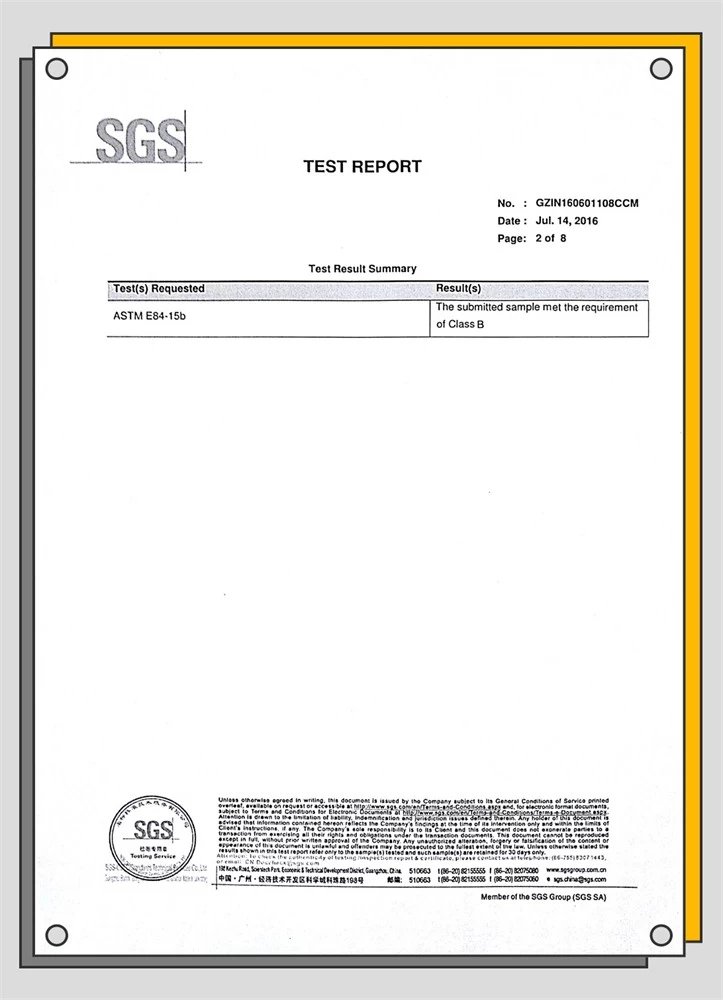Raw Materials of Continuous Molding Process of FRP Roof Panel
The FRP continuous panels forming process is a process in which unsaturated polyester resin is impregnated with glass fibers on a continuous forming machine, and then heated and solidified by a mold to obtain a continuous plate with a specific cross-sectional shape. Compared with other materials, FRP sheet has the characteristics of light weight, high strength, and good impact resistance, especially its unique light transmittance (the light transmittance of 1.2mm thick FRP light transmittance plate can reach 90%) and cross-section designability. In addition, FRP boards also have excellent corrosion resistance, weather resistance and color arbitrariness, so they are widely used in greenhouses, solar water heater covers, industrial plants, warehouses and other aspects of lighting, anti-corrosion and decoration.
In the 1980s, the production process of china fiberglass roofing sheet manufacturers was mainly hand lay-up, with low production efficiency, unstable quality, uneven cross-section thickness, surface wrinkles, and many bubbles. It was mainly used in bicycle sheds and market sheds. Until the end of the 1990s, a relatively mature domestic production line was officially put into production. Since 2002, the localization of equipment has been promoted on a large scale.
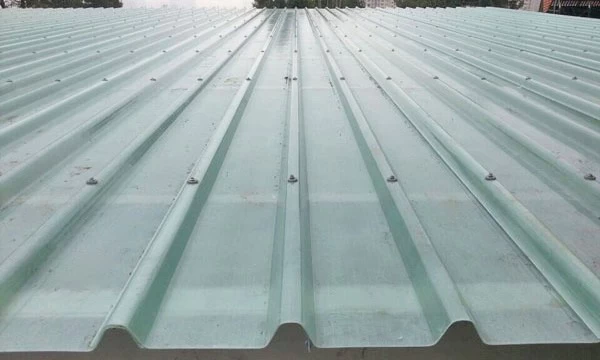
1. Glass fiber chopped strand mat
At present, the specifications of chopped strand mat commonly used by china transparent fiber sheet for roof suppliers are divided into EMC300, EMC450, EMC600, etc. according to the thickness (gram weight). Because EMC600 has obvious lap joints during use, it affects the appearance and is prone to waste products, so it is rarely used now. Chopped glass fiber mat is a sheet made of continuous long fibers cut into 50mm short fibers by a cutting roller, evenly scattered into a thin layer, and then made of a binder (usually powder). Requirements: Uniform dispersion of fibers, good wettability, refractive index as close as possible to resin, etc.
2. Resin matrix
At present, most of the continuous FRP sheet molding processes use o-phthalic or isophthalic unsaturated polyester resins, and some products with special requirements use vinyl resins (mostly opaque and corrosion-resistant sheets). Ortho-phthalic resin can meet the normal use in general occasions, with high strength and good weather resistance; there is no difference in the performance of the board produced by iso-phthalic resin, but the aging and attenuation speed of iso-phthalic board is faster than that of ortho-phthalic board. much slower.
In terms of parameter selection, the resin should have low shrinkage and appropriate viscosity so that it can impregnate glass fibers well. For lighting panels, the resin must have excellent light transmission after curing, and the refractive index of the resin casting body should match or be basically the same as that of the glass fiber. Since FRP boards are mostly used outdoors, especially transparent boards, UV absorbers must be added to the resin.

3. Anti-aging surface layer
During the forming process of the FRP sheet, a film must be used on the upper and lower surfaces of the sheet. Generally, the manufacturer uses a polyester film. After corona treatment, the connection interface with the FRP sheet is increased, so that the film can be bonded with the FRP sheet. The bonding interface achieved by physical methods is very unstable, and it is easy to fall off after large changes in cold and heat or multiple changes in cold and heat. If it is used on roofs and external walls, it will increase the hidden danger of water leakage. Many projects fail to waterproof the roof and side walls. .
Yuyi tech is china transparent frp roofing sheet factories, we self-developed gel coat spray surface can replace polyester film, and has better weather resistance than polyester film. It has been well received by customers and has gradually phased out traditional polyester film.
4. Other fillers
Most manufacturers now use room temperature curing formula heating rapid prototyping process. The auxiliary materials in the formula include: curing agent, accelerator, color paste (or color gel coat) and various fillers. In the normal temperature curing formula, methyl ethyl ketone peroxide is generally used as the curing agent; cobalt isooctanoate is used as the accelerator. The participation of cobalt isooctanoate in the reaction has little effect on the color change of the board, and it has outstanding advantages in the production of light-transmitting boards. It is worth mentioning that until now, many manufacturers still have misunderstandings in adding color paste or color gel coat. Generally, they will be diluted with styrene or trichloroethyl phosphate (TCEP), and then added through a proportional pump. Both approaches are wrong. If it is diluted with styrene and added, it will cause the board to become brittle and the strength will decrease, while diluting with TCEP will cause the board to be soft and the weather resistance will decrease (because TECP is an additive flame retardant, it does not participate in the reaction, and it is in the resin There is a polymerization inhibition effect in the polymerization reaction), and it will reduce the adhesion of the anti-aging film. Although the addition amount is not large, it is not advisable in terms of product quality. The correct way is to add the color paste or color gel coat to an appropriate amount of resin and stir evenly, and then add it through a proportional pump.
There are also some manufacturers who use high-temperature curing formulas. The curing agent uses tert-butyl peroxybenzoate (TBPB) or tert-butyl peroxy-2-ethylhexanoate (TBPO). Compared with room-temperature curing formulas, this method produces The board effectively solves the phenomenon of gelation at the high temperature in summer at the resin feeding place of the FRP board production line, but the relative energy consumption is relatively high, and the performance of the final product has little difference.


